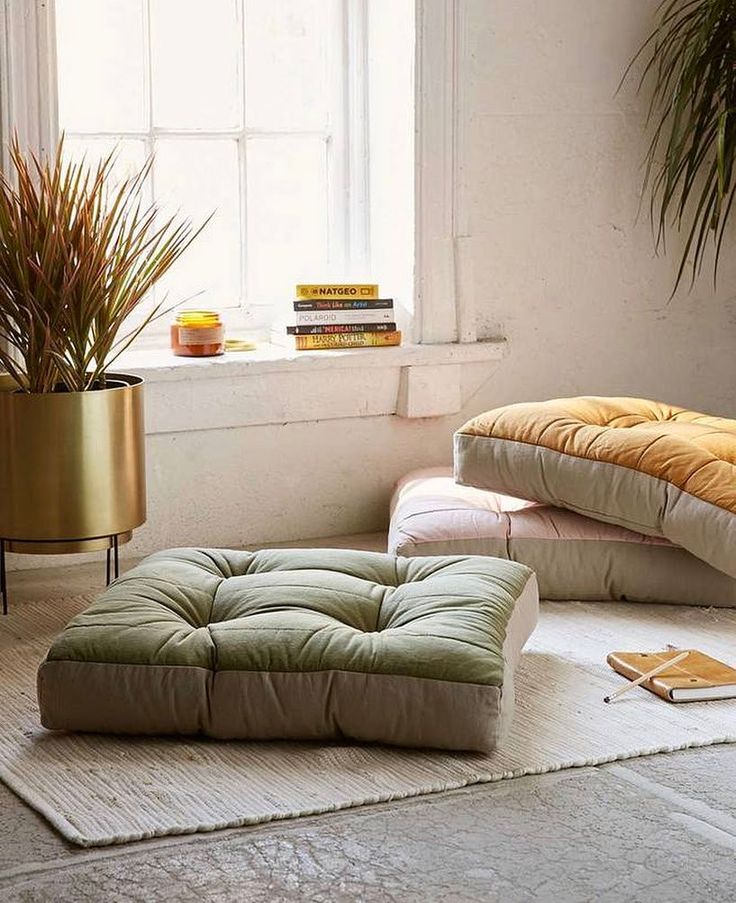We know we need to incorporate more moments of peace, mindfulness, and tranquility into our routines as a healthy antidote to the hustle and bustle of daily life. Yet finding the space and time for quietude can feel like an exclusive luxury.
Carving out a dedicated space for meditation and mindfulness can offer a personalized sanctuary for calming your mind, reducing stress, and supporting your sense of peace and contentment.
The Benefits of a Dedicated Meditation Nook
Stress Reduction
The intentional act of setting aside time to connect with yourself in a serene environment helps to alleviate stress and promotes relaxation.
Enhanced Focus
A designated meditation space allows you to detach from external noise and distractions, as well as internal chatter, boosting your mental clarity. Mindfulness practice can also enhance focus and concentration, improving cognitive function.
Better Sleep Quality
Meditation has been shown to have a positive impact on sleep quality. A calming meditation routine before bedtime can help relax the mind, promoting deeper, more restful sleep.
More Consistent Mindfulness
A dedicated space is a visual reminder to be present and mindful. The familiar surroundings become associated with calmness, making it easier to slip into a meditative state, and encourages the integration of mindfulness practices into daily life.
Improved Well-Being
Regular meditation has been linked to enhanced physical and mental well-being. By creating a serene area for reflection, you set aside space to cultivate positive emotions, reduce anxiety, and boost creativity.
Tips for Creating a Meditation Space
There’s no one-size-fits-all approach to creating the perfect zen den. The key is to personalize it to resonate with your unique needs and preferences. Here are a few tips to get you started:
1. Location Matters
As they say when it comes to real estate: location matters. Choose a quiet area with minimal noise and foot traffic, ideally removed from distractions. Consider a spare room, a corner in your bedroom, or even a cozy nook in your living room or home office. Any space can work as long as it supports your goal to create a stress-free environment that feels inviting and comfortable, allowing you to relax, settle in, and focus. If needed, consider using earplugs, noise-canceling headphones, or white noise to help set the tone.
2. Declutter and Simplify
Remove unnecessary clutter and distractions from the space, opting for clean lines and minimal furniture to create a visually calming environment and invite soothing energy into the space.
3. Comfortable Seating
Invest in a comfortable cushion, mat, or chair that supports your posture during meditation. You want to feel comfortable, but not so comfortable you’ll easily fall asleep. Your posture should be relaxed but alert, with a supported core. Consider adding throws, pillows, bolsters, or blankets for additional warmth and coziness.
4. Dimmable Lighting
Opt for soft, diffused lighting to create a calming ambiance. Consider using dimmable lights, salt lamps, candles, or string lights to get the desired level of illumination. You may be seeking a boost of bright energy during one session, or want to keep the lights low for a more restorative practice during another.
5. Engage the Senses
Strive to create an experience that stimulates your senses. Visually, use soft, neutral colors or muted earth tones in the space to create a sense of calm. Use aromatherapy to stimulate your sense of smell with a diffuser, candles, incense, or essential oils. You can also create a calming ambiance with a playlist of soft, nature-inspired sounds, or try listening to chants, mantras, or a guided meditation. Experiment with different combinations to find what resonates most with you.
6. Use Natural Elements
Add some life energy by incorporating easy-to-care-for plants into your space. Add other natural elements such as stones or wood to create a grounding atmosphere. These items can connect you with the earth and contribute to an overall sense of peace.
7. Personalize Your Sanctuary
Add elements that inspire you and also reflect your personal journey. This could include favorite pieces of artwork, inspirational quotes, photos of loved ones, or meaningful objects or symbols that bring you peace or hold significance for you.
8. Create a Tech-Free Zone
Power down your phone, and avoid bringing electronic devices into your meditation space that could disrupt your meditative flow. Email notifications, text alerts, and blue light emitted from smartphones and tablets can disrupt your focus.
Tips for Establishing a Meditation Practice
Remember that meditation is a practice, not a place. The true benefits of meditation lie in integrating mindfulness into your daily life. Here are some additional tips:
● ⬥ Begin with short meditation sessions, just 5 to 10 minutes daily. Consistency is key, so aim for regular practice, even if it’s brief.
● ⬥ Utilize guided meditations for beginners, and explore different techniques. Many free resources are available online or through apps.
● ⬥ Consider joining a meditation group or online forum to connect with others on their mindfulness journey. Sharing experiences and receiving support can be highly beneficial in creating a sense of accountability and building consistency.
● ⬥ Practice mindfulness throughout your day. Pay attention to your breath, savor the taste of your food, and be present in everyday activities.
Creating a meditation nook is a personal undertaking. Experiment and explore different options to find what works best for you.
Stress-Reducing Home Decor: Creating a Relaxing Atmosphere
5 Ways Office Feng Shui Can Help Reduce Stress at Work
The Power of Blue – Bring Tranquility and Harmony to Your Home


